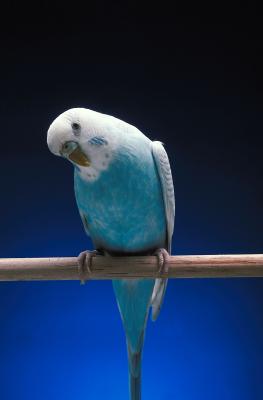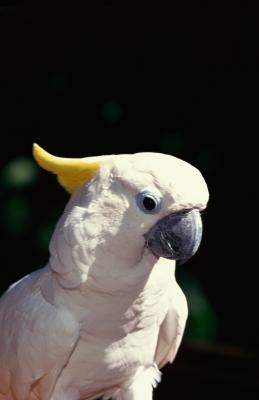Employment opportunities for veterinarians are expected to grow fast. Single adults have come to appreciate animal companionship. Pet owners may be willing to pay for more elective and intensive pet care than they have in the past.
In addition, new scientific methods of breeding and raising livestock, poultry, and fish as long as the continued support for public health and disease control programs will also contribute to the demand for veterinarians. Demand for specialists in many areas including toxicology, laboratory animal medicine, and pathology is expected to increase. Most of these jobs for specialists will be in metropolitan areas.
Veterinarians have an inquiring mind and good powers of observation. They generally have aptitude and interest in the biological sciences. Veterinarians also need an understanding of animals. Veterinarians should be able to meet, talk, and work well with a variety of people.
The primary reward for all veterinarians is the personal satisfaction in knowing that they are improving the quality of life for animals and people. Depending on the stage of a veterinarian's career, the type of practice, and the veterinarian's likes and dislikes, the pluses and minuses of a veterinary career may vary.
Veterinarians who are employed by government agencies, laboratories, colleges, and commercial firms often have responsibility for large health programs and may manage large numbers of people.
Veterinarians who work for the U.S. Department of Agriculture's Food Safety and Inspection Service (FSIS) and for state and municipal food inspection services protect the public from diseased livestock and unsafe meat and poultry. They ensure that food products are safe and wholesome. To prevent the introduction of foreign diseases, veterinarians employed by state and federal regulatory agencies quarantine and inspect animals brought into the United States from other countries.
Veterinarians in research seek better ways to prevent and solve animal and human health problems. Many problems, such as cancer and cardiovascular disease, are studied through the use of laboratory animals, which are carefully bred, raised, and maintained under the supervision of veterinarians. Laboratory animal veterinarians help select the best animal models for particular research projects and ensure that the animals receive proper care.
In addition to developing ways to reduce or eliminate the threat of animal diseases, veterinarians involved in research have made many direct contributions to human health. Veterinarians were the first to isolate filterable viruses, slow viruses, the first tumor-causing virus and other pathogenic agents. They also helped conquer malaria and yellow fever, produced an anticoagulant used to treat some people with heart disease, and defined and developed surgical techniques for humans, such as hip-joint replacement and limb and organ transplants.
Veterinarians working in pharmaceutical and biomedical research firms develop, test, and supervise the production of drugs, chemicals, and biological products, such as antibiotics and vaccines for human and animal use. These veterinarians usually have specialized training in pharmacology, virology, bacteriology, pathology, parasitology, toxicology, nutrition, endocrinology, or laboratory animal medicine.
However, most veterinarians work in private clinical practice, which has its own set of advantages and disadvantages. Veterinarians in private clinical practice gain satisfaction from helping owners keep their animals well and from treating sick and injured animals. Private clinical practitioners who own their own practices determine the nature of their practice and set their working hours. Because they are self-employed, most private clinical practitioners choose to work beyond normal retirement age.
Veterinarians in private practice serve a variety of animals. This is especially true in companion animal practice because of the increased popularity of pet birds, small mammals (like hamsters and gerbils), and fish. Today, a veterinarian may be treating llamas, catfish, or ostriches as well as cats, dogs, horses, cows, hogs, sheep, and goats.
The chief risk for veterinarians is injury by animals; however, modern tranquilizers and technology have made it much easier for veterinarians to work on all types of animals.
Large animal practitioners tend to work more irregular hours than do those in small animal practice, industry, or government.
Students interested in a career in veterinary medicine need to take a strong science, math, and biology program in high school. To be considered for admission to a college of veterinary medicine, a student must complete undergraduate preveterinary medical coursework, which usually includes three to four years of college study, with specific course requirements. General requirements include basic language and communication skills, social sciences, humanities, mathematics, chemistry, and the biological and physical sciences.
Preveterinary coursework can be completed at many colleges and universities, including those at which the veterinary medical schools are located.Admission to veterinary school is highly competitive.
Applicants usually have grades of "B" or better, especially in the sciences. Applicants must take the Veterinary Aptitude Test, Medical College Admission Test, or the Graduate Record Examination. Most colleges give preference to candidates with animal or veterinary related experience.
In most veterinary colleges the professional program comprises two phases. In the first phase, preclinical sciences, such as anatomy, physiology, pathology, pharmacology, and microbiology are emphasized. Most of the students' time is spent in classroom and laboratory study.
The second phase of professional study is principally clinical. Students learn the principles of medicine and surgery in the classroom and through hands-on clinical experience. Students learn to apply their knowledge in a clinical setting under the supervision of graduate veterinarians on the faculty. Students treat animals, perform surgery, and deal with owners who use the school's clinical services.
In conclusion, students learn about many different animals and diseases, and become skilled in surgical techniques and many laboratory and diagnostic procedures.
After studies, veterinarians must acquire a license issued by the state they wont to work in. In research and teaching, a master's or Ph.D. degree is usually required. Veterinarians who seek specialty board certification in one of the 20 specialty fields, such as ophthalmology, pathology, surgery, radiology, or laboratory animal medicine, must complete 2- to 5-year residency programs and must pass an examination.
Approximately half the states require veterinarians to attend continuing education courses to maintain their licenses. New scientific knowledge and techniques are constantly being developed, and veterinarians must keep up to date by reading scientific journals and attending professional meetings and seminars.

 How to Kill Mites in Caged Birds
How to Kill Mites in Caged Birds
How t
How to Kill Mites in Caged Birds
How to Kill Mites in Caged Birds
How t
 Pet Varieties That Dont Drop
Aside from serious behavioral problems, such as aggression,
Pet Varieties That Dont Drop
Aside from serious behavioral problems, such as aggression,
 Which Birds Emit Dander?
Which Birds Emit Dander?
Which Birds E
Which Birds Emit Dander?
Which Birds Emit Dander?
Which Birds E
 Perfect Travel Destinations With Travellers Aged In Excess Of 80
Person stage is a persons age when oldies have all their t
Perfect Travel Destinations With Travellers Aged In Excess Of 80
Person stage is a persons age when oldies have all their t
 Parrots of Australia
Australian ParrotsThe Easter
Parrots of Australia
Australian ParrotsThe Easter